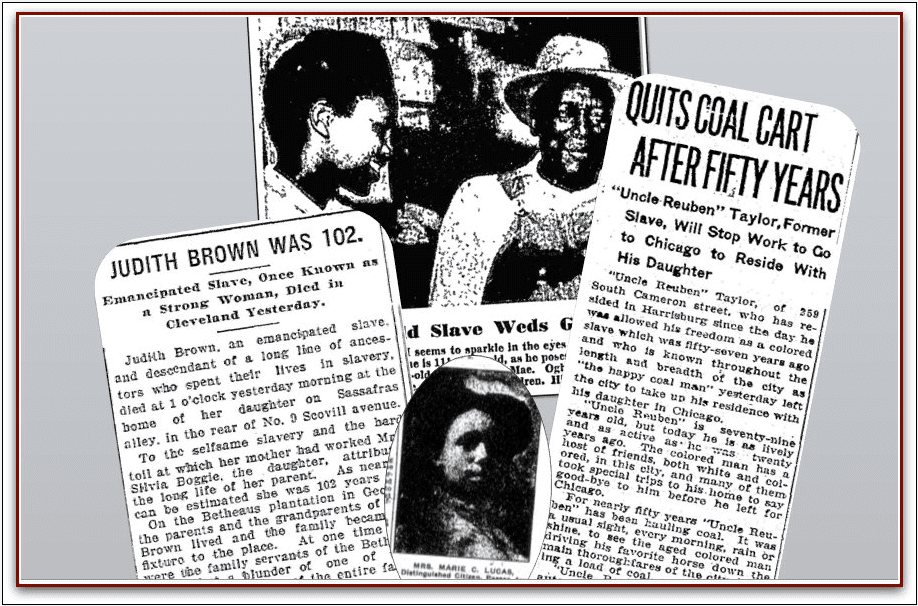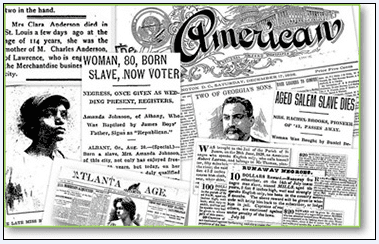FamilySearch recently announced it is working with the Smithsonian National Museum of African American History and Culture, the Afro-American Historical & Genealogical Society and the California African American Museum to crowdsource the online indexing of 1.5 million Freedman’s Bureau records that FamilySearch has put online.
This is a great resource to start learning about African American slaves in early American history. Is it possible to find out more about these slaves – the actual stories of their individual lives? Can we know what happened to each one?
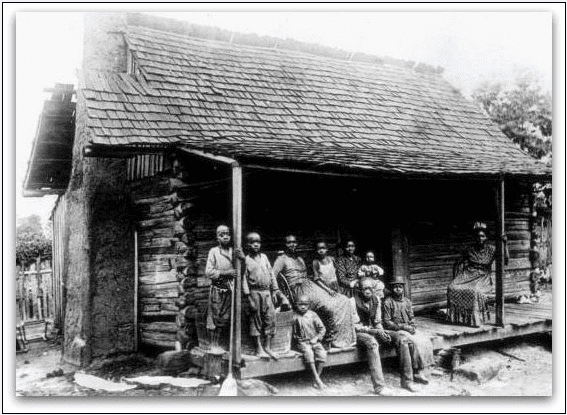
In some cases, yes – we can.
There are two key sources for these African American slave stories.
Slave Stories in Newspapers
Some of these black slave stories can be found in old newspapers. GenealogyBank’s 1.8 billion news stories are available – with unlimited downloads – at a nominal monthly or annual fee, making them easily available to genealogists everywhere.
As the nation grew so did newspapers – and newspapers recorded and preserved our ancestors’ stories.
For example, in newspapers we can learn the story of 79-year-old “Uncle Reuben” Taylor who grew up a slave on a farm near Baltimore, Maryland, was freed in 1863, and launched his career over the next 57 years delivering coal in Harrisburg, Pennsylvania. The Patriot (Harrisburg, Pennsylvania) 31 December 1920, page 7 tells us that he then retired to live with his daughter in Chicago.
Dig in and find your ancestors’ stories in GenealogyBank’s newspaper vault 1690 to Today.
Note that GenealogyBank also has a special search for our online African American Newspaper Archives, which contain some of the earliest black publications such as Frederick Douglass’ Paper, an early anti-slavery newspaper by abolitionist Frederick Douglass.
Born in Slavery: Slave Narratives from the Federal Writers’ Project, 1936-1938
The Library of Congress has digitized and put online the collection of all 2,300+ first-person interviews with former slaves that were conducted by the Federal Writers’ Project from 1936-1938.
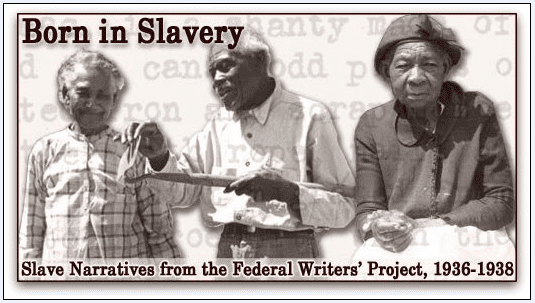
These one-on-one slave interviews are invaluable.
The typescripts retain the tone of the person being interviewed. Reading the pages, you quickly can “hear” them speaking to you today.
Robert Bryant lived in Herculaneum, Mississippi – here is his story.
Find his story – and the story of thousands of others in this online collection.
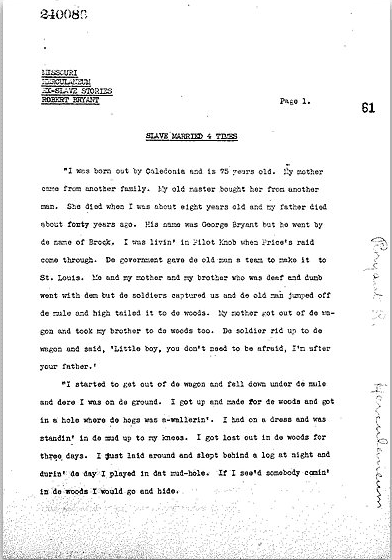
Real people. Real stories. Real lives.
These stories give you the opportunity to glimpse the life of a slave – as told one story at a time.
Get to know them – read and experience their stories.
Related African American Slavery Articles:
- 102-Year-Old Ex-Slave Once Shook Abraham Lincoln’s Hand
- African American Slave Born in 1686 Dies at Age 116 in 1802!
- Frederick Augustus Washington Bailey, aka Frederick Douglass
- African American Slave Trade: Ships & Records for Genealogy (Infographic)
- 13th Amendment Ratified, Abolishing Slavery in America

